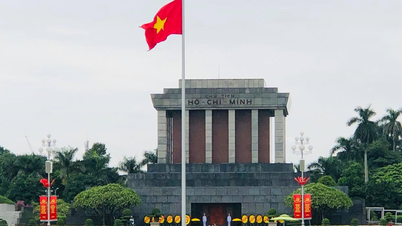Emphasizing the above requirement in his speech at the National Conference to disseminate and implement the Resolution of the 11th Central Conference, Session XIII, yesterday morning, General Secretary To Lam also specifically noted that localities must be extremely proactive and responsible in developing plans to arrange administrative units at the commune and ward levels; in which, "The Standing Committees of the provinces must discuss and calculate very carefully, in the spirit of long-term vision, for the country and for the people, to have the most reasonable arrangement and reorganization plan".
In the context of implementing the two-level local government model, reorganizing the commune level is of special importance and is key in building a government close to the people, proactively oriented towards the people to better serve them.
According to the Central Government's direction, the country will reduce about 60 - 70% of the number of commune-level administrative units. With such a large reduction, it is required that the development of plans for the arrangement and merger of communes must absolutely avoid mechanical thinking. An ideal commune/ward does not necessarily have to be "populous" or "large in land", but must be a unit with effective governance capacity, able to connect public services, promote socio -economic development, especially ensuring that people can access the government conveniently, quickly and reliably.
Right before the Conference yesterday morning, on April 15, National Assembly Chairman Tran Thanh Man signed and issued Resolution No. 76 of the National Assembly Standing Committee, which clearly stated that the development of a plan to arrange provincial and communal administrative units must take into account factors such as natural conditions, traffic infrastructure, distribution and organization of economic spaces to ensure maximum promotion of the potential and advantages of economic development of each locality, mutual support to promote the overall socio-economic development of the administrative unit after the arrangement...
With the two-tier local government model, a major challenge, according to experts, is to ensure connectivity and avoid a management "gap" between the provincial and commune levels by the commune level. Another existing challenge is that the new commune level will have to shoulder a larger workload, a larger area, and a larger population, while the capacity of staff and technological infrastructure in many places is not yet synchronized.
Therefore, from an institutional perspective, National Assembly Chairman Tran Thanh Man said that the Government and the National Assembly will amend and supplement laws directly related to the organization of the apparatus, basic rights and interests of people, organizations, enterprises, local authorities and directly impacting socio-economic development in the fields of budget, investment and planning. During the amendment and supplementation process, special attention will be paid to promoting decentralization, delegation of authority, clearly defining the authority between the central and local levels, between the provincial and communal levels, clearly defining which tasks of the district-level government need to be transferred to the communal-level government or assigned to the provincial-level government to facilitate the locality.
The arrangement and merger of communes must go hand in hand with model reform, improving the capacity of the government, and having synchronous solutions for applying digital technology, online public services, and reorganizing the civil service team. In particular, as required by Prime Minister Pham Minh Chinh, each commune-level administrative unit must have a Public Administration Service Center to smoothly and promptly handle administrative procedures, avoiding congestion and delays that affect people and businesses.
Before arranging and merging communes, it is also necessary to attach importance to and seriously implement the collection of people's opinions, thereby not only promoting and ensuring the people's right to mastery but also helping to promptly detect practical difficulties and local specific factors that from the perspective of state management agencies may not be fully visible.
Reorganizing commune-level administrative units is an indispensable step in the overall great revolution of streamlining the political system's apparatus to be lean, strong, efficient, effective, and efficient. The important thing is not "how many communes can be reduced", but the ultimate goal and destination is to build a streamlined, effective, efficient, close-to-the-people commune-level government, proactively oriented towards the people to better serve the people.
Source: https://daibieunhandan.vn/dich-den-la-phuc-vu-nhan-dan-tot-hon-post410491.html


![[Photo] Readers line up to visit the photo exhibition and receive a special publication commemorating the 135th birthday of President Ho Chi Minh at Nhan Dan Newspaper](https://vphoto.vietnam.vn/thumb/1200x675/vietnam/resource/IMAGE/2025/5/17/85b3197fc6bd43e6a9ee4db15101005b)
![[Photo] More than 17,000 candidates participate in the 2025 SPT Competency Assessment Test of Hanoi National University of Education](https://vphoto.vietnam.vn/thumb/1200x675/vietnam/resource/IMAGE/2025/5/17/e538d9a1636c407cbb211b314e6303fd)



![[Photo] Prime Minister Pham Minh Chinh chairs meeting on science and technology development](https://vphoto.vietnam.vn/thumb/1200x675/vietnam/resource/IMAGE/2025/5/17/ae80dd74c384439789b12013c738a045)



















![[Photo] Nearly 3,000 students moved by stories about soldiers](https://vphoto.vietnam.vn/thumb/1200x675/vietnam/resource/IMAGE/2025/5/17/21da57c8241e42438b423eaa37215e0e)







































































Comment (0)